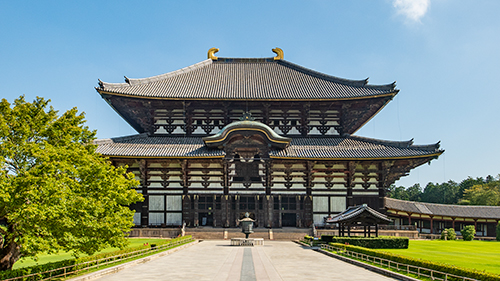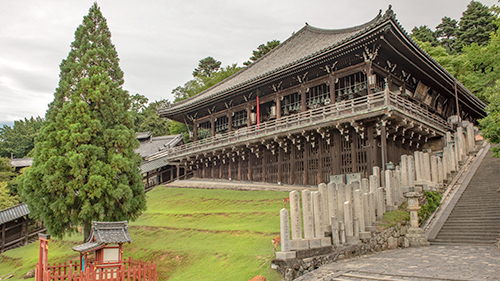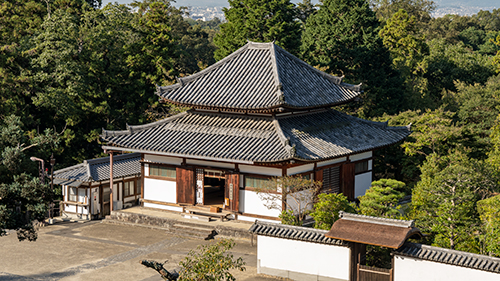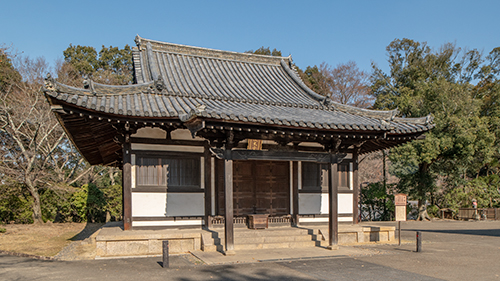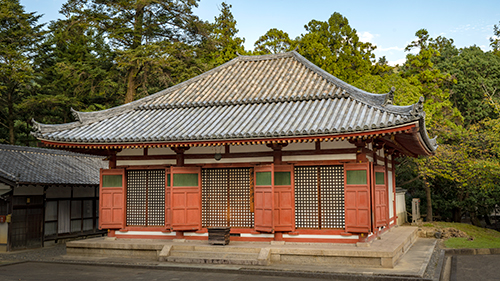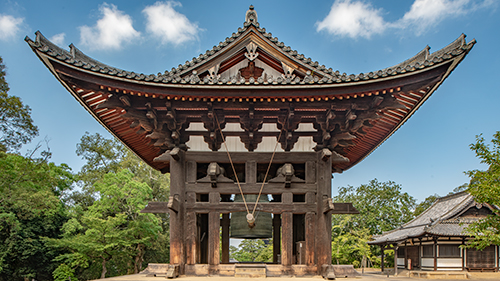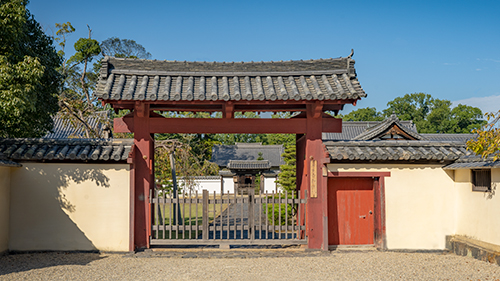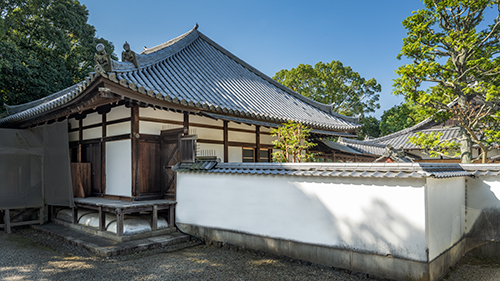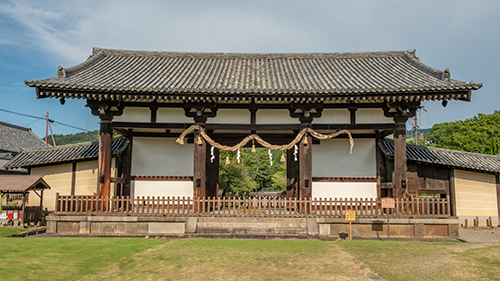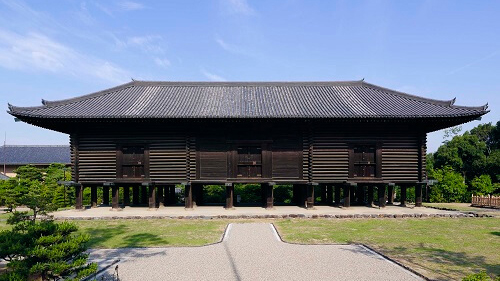Nandai-mon
(Great South Gate)
Precincts Guide Map is here.
National Treasure / 12th century

The Great South Gate is the main gate of Tōdai-ji. The original, erected during the Nara period, was destroyed by a typhoon during the Heian period. The present structure, which dates to the Kamakura period, was built using what is known as the “Daibutsu style.” A type of construction based upon Sung Chinese models, it was newly introduced to Japan by Chōgen, the monk responsible for restoring Tōdai-ji, at the end of the twelfth century. The ridgepole was raised in 1199 and the structure was completed in 1203 along with the statues of the guardian dieties, the Two Ni-ō housed in the gate. The gate with its double hip-and-gable roof is five bays wide and two bays deep. Originally there were three pairs of doors. The eighteen giant pillars that support the roof measure 19.058 meters and the entire structure rises 25.46 meters above the stone plinth on which it rests. The Great South Gate is the largest temple entrance gate in Japan, suitable in scale to the Great Buddha Hall.
Kongō Rikishi
National Treasures / 13th century
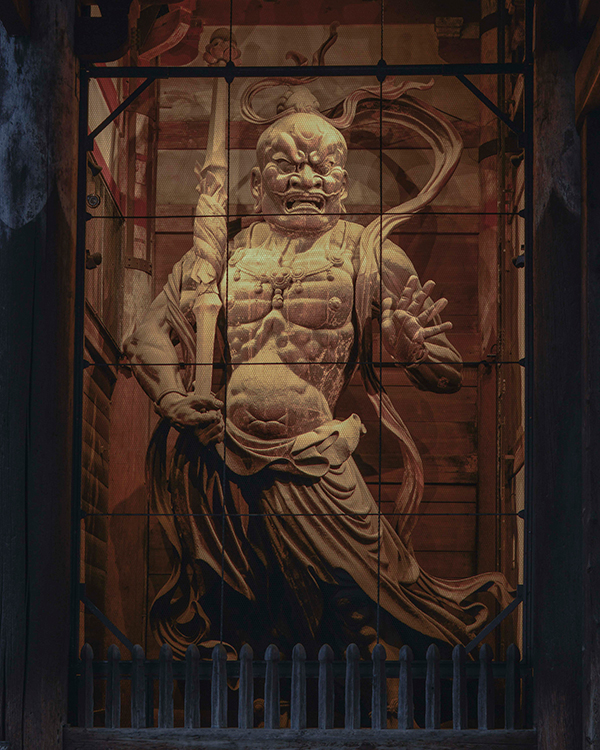
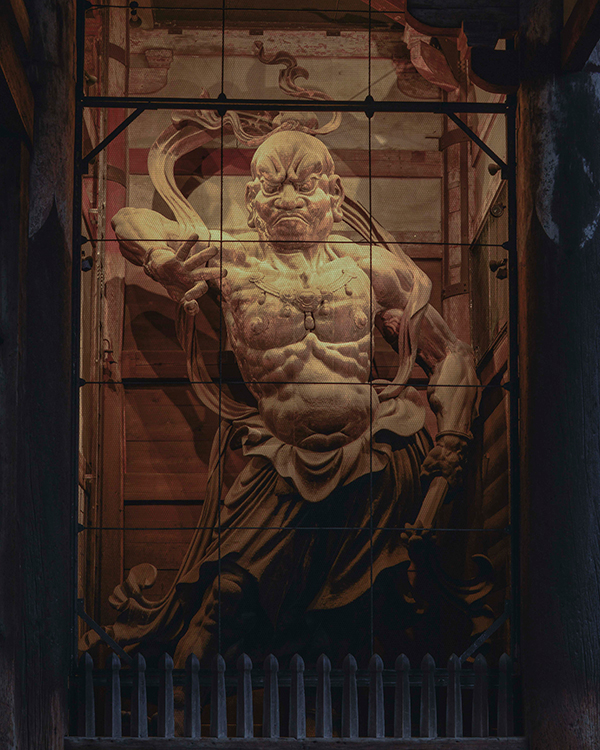
Visitor Information
-
Opening Hours / Admission Fees
-
MAP
-

» Nandai-mon

